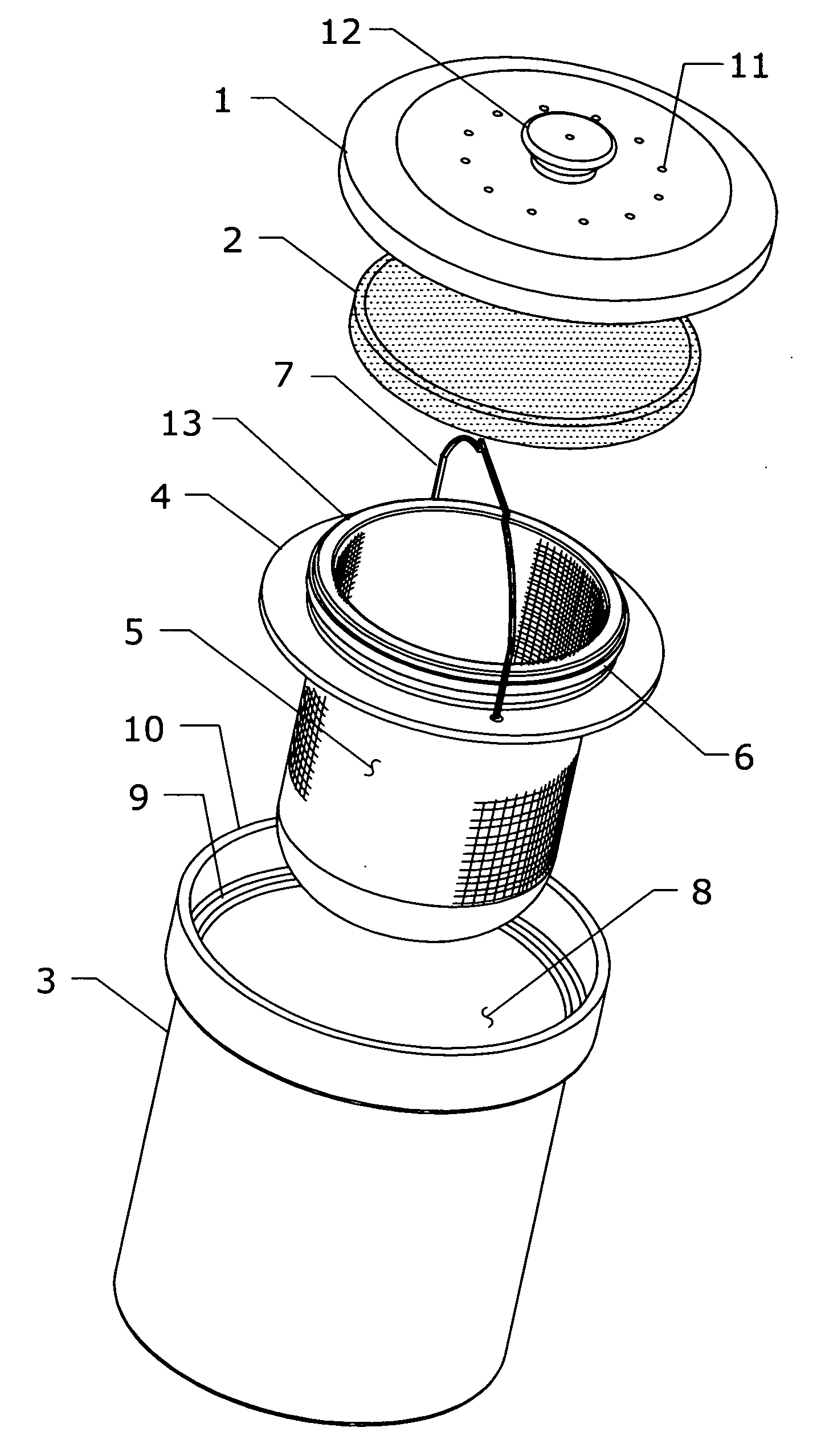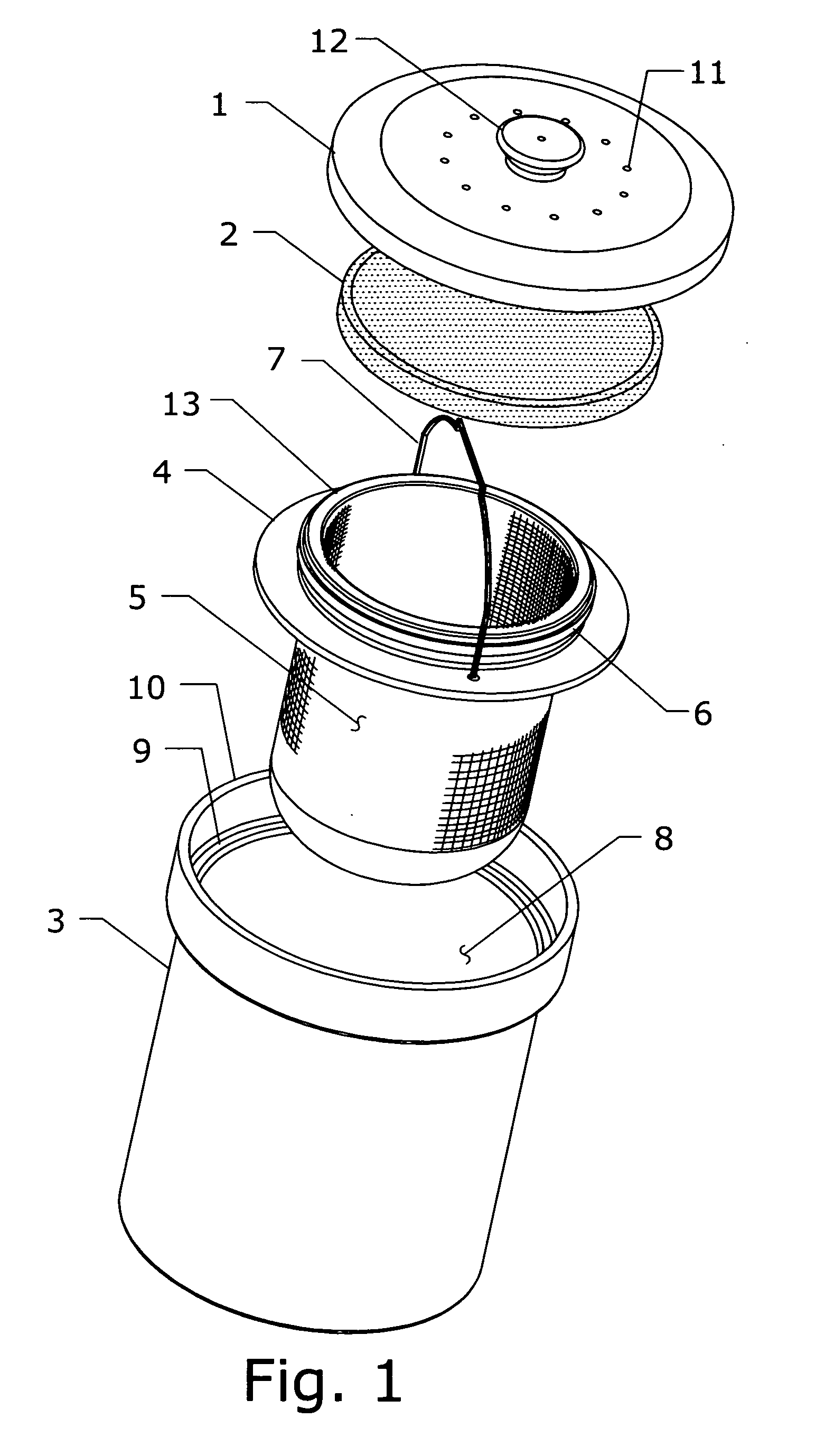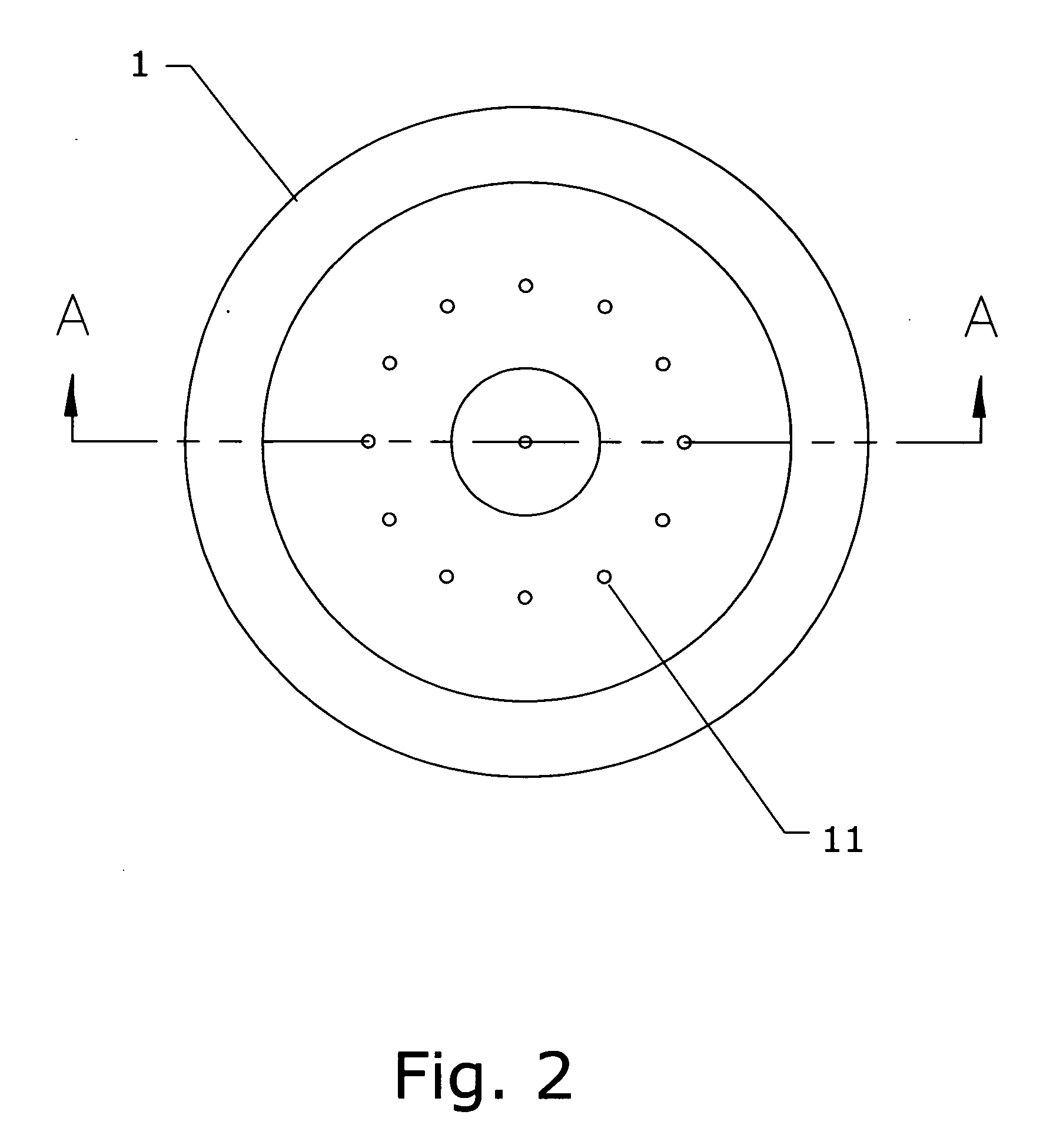Device and method for collecting of organic waste
a technology for collecting organic waste and devices, applied in the field of devices and methods for collecting organic waste, can solve the problems of inconvenient operation, inconvenient storage, and inability to meet the needs of consumers, and achieve the effect of promoting optimal aeration of organic waste and facilitating operation
- Summary
- Abstract
- Description
- Claims
- Application Information
AI Technical Summary
Benefits of technology
Problems solved by technology
Method used
Image
Examples
Embodiment Construction
: DETAILED DESCRIPTION
[0037]FIGS. 1-3 illustrate preferred embodiment of the invention. FIG. 1 is an exploded view of the preferred embodiment and illustrates a rigid container (3) enclosing an inside cavity (8) with an opening at top; said container (3) having rim (10) and a shoulder (9), both located close but parallel to each other towards the top of the said rigid container (3). The rim (10) is designed to fit the lid (1) so that said lid does not fall into the inside cavity (8) of the said rigid container (3); at the same time the said lid (1) covers the contents of the rigid container (3). The lid (1) can be lifted by holding the knob (12). The dimensions of these individual parts are proportional to the overall size of the device.
[0038]In the preferred embodiment of the invention, the shoulder (9) is designed to hold an annular flange (4). Flange (4) suspends a biodegradable bag (5) which is secured by a retaining band (6). The flange (4) has a handle (7) having a storage “do...
PUM
| Property | Measurement | Unit |
|---|---|---|
| organic | aaaaa | aaaaa |
| flexible | aaaaa | aaaaa |
| weight | aaaaa | aaaaa |
Abstract
Description
Claims
Application Information
 Login to View More
Login to View More - R&D
- Intellectual Property
- Life Sciences
- Materials
- Tech Scout
- Unparalleled Data Quality
- Higher Quality Content
- 60% Fewer Hallucinations
Browse by: Latest US Patents, China's latest patents, Technical Efficacy Thesaurus, Application Domain, Technology Topic, Popular Technical Reports.
© 2025 PatSnap. All rights reserved.Legal|Privacy policy|Modern Slavery Act Transparency Statement|Sitemap|About US| Contact US: help@patsnap.com



